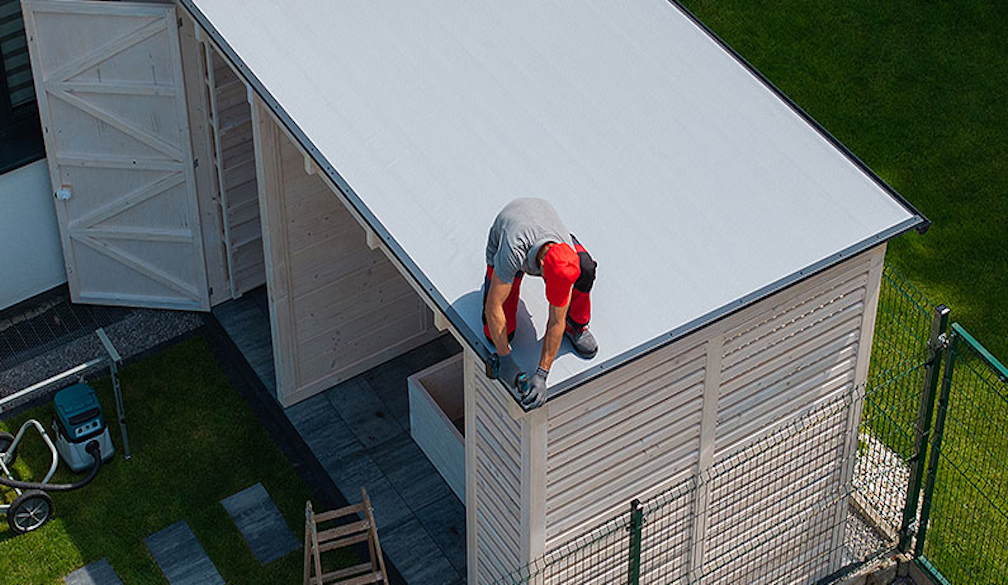What Are The Different Types of Shed Roofs?

When choosing a shed, one crucial decision is the type of roof it will have. The roof not only impacts the shed's appearance but also its functionality and durability. Understanding the various types of shed roofs can help you make an informed choice that suits your needs and aesthetic preferences, including options like a skillion shed. Let’s delve into the different types of shed roofs and what makes each one unique.
The Classic Gable Roof
The gable roof is one of the most popular types of shed roofs. It's characterised by two sloping sides that meet at a ridge, forming a triangular shape. This design is excellent for shedding water, making it ideal for areas with heavy rainfall. Gable roofs offer ample overhead storage space and can be easily customised with windows or skylights to enhance natural lighting inside the shed. When contacting a shed supplier, you'll find gable roofs are a common and versatile option.
The Practical Flat Roof
Flat roofs are simple and modern, providing a sleek look to any shed. Despite the name, flat roofs usually have a slight pitch to allow for water drainage. They are easier and cheaper to construct compared to pitched roofs and offer the potential for rooftop gardens or solar panels. Flat roofs are a great choice if you have height restrictions or want a contemporary design. Be sure to discuss waterproofing and maintenance needs with your shed supplier when opting for a flat roof.
The Elegant Hip Roof
A hip roof features slopes on all four sides, which converge at the top to form a ridge. This design is highly stable and can withstand strong winds, making it suitable for windy areas. Hip roofs also offer a stylish and sophisticated look, adding a touch of elegance to your shed. Although they might be more complex to build, the aesthetic and functional benefits make them a worthwhile consideration.
The Functional Lean-To Roof
The lean-to roof, also known as a shed roof or pent roof, consists of a single slope. It's an excellent choice for sheds built against another structure, as it allows for efficient water runoff and maximises wall height on one side. Lean-to roofs are simple to construct and cost-effective, making them a favourite for DIY projects. They are perfect for smaller sheds or when you need to attach a shed to an existing building.
The Versatile Gambrel Roof
Gambrel roofs, often seen on barns, feature two slopes on each side – a steeper lower slope and a gentler upper slope. This design provides extra headroom and loft space, making it ideal for storage-heavy sheds. Gambrel roofs are visually striking and offer a unique, rustic charm. They may require more complex framing but are a fantastic option for those needing additional interior space.
The Distinctive Saltbox Roof
Saltbox roofs have an asymmetrical design with one long, sloping side and one shorter side. This style originated from colonial architecture and offers a charming, traditional appearance. The extended slope provides excellent wind resistance and additional storage space on the longer side. Saltbox roofs can add character to your shed, though they might be a bit more challenging to build.
The Stylish Skillion Roof
A skillion roof, or mono-pitched roof, features a single sloping surface. It's similar to a lean-to roof but stands alone without being attached to another structure. Skillion roofs are modern and stylish, offering a unique aesthetic appeal. They are easy to construct and provide excellent water drainage. This roof type is ideal for contemporary sheds and can be oriented to maximise natural light or solar energy capture.
Shed Roof Sum Up
Choosing the right type of shed roof is essential for both the functionality and aesthetic of your shed. Whether you prefer the classic gable, the sleek flat, the elegant hip, the practical lean-to, the versatile gambrel, the distinctive saltbox, or the stylish skillion, there's a roof design to suit every need. When discussing options with your shed supplier, consider the climate, your storage needs, and your personal style to make the best choice.
Understanding the different types of shed roofs can make your decision easier and ensure that your shed not only looks great but also stands up to the elements for years to come.

